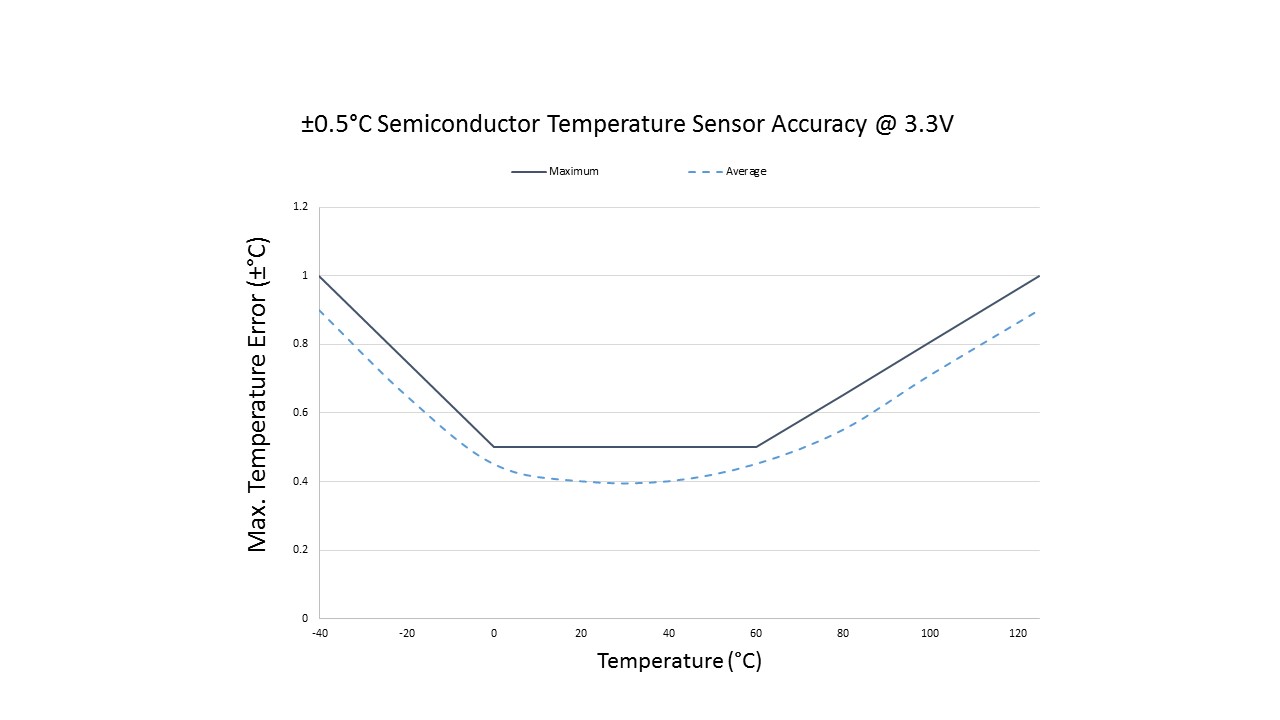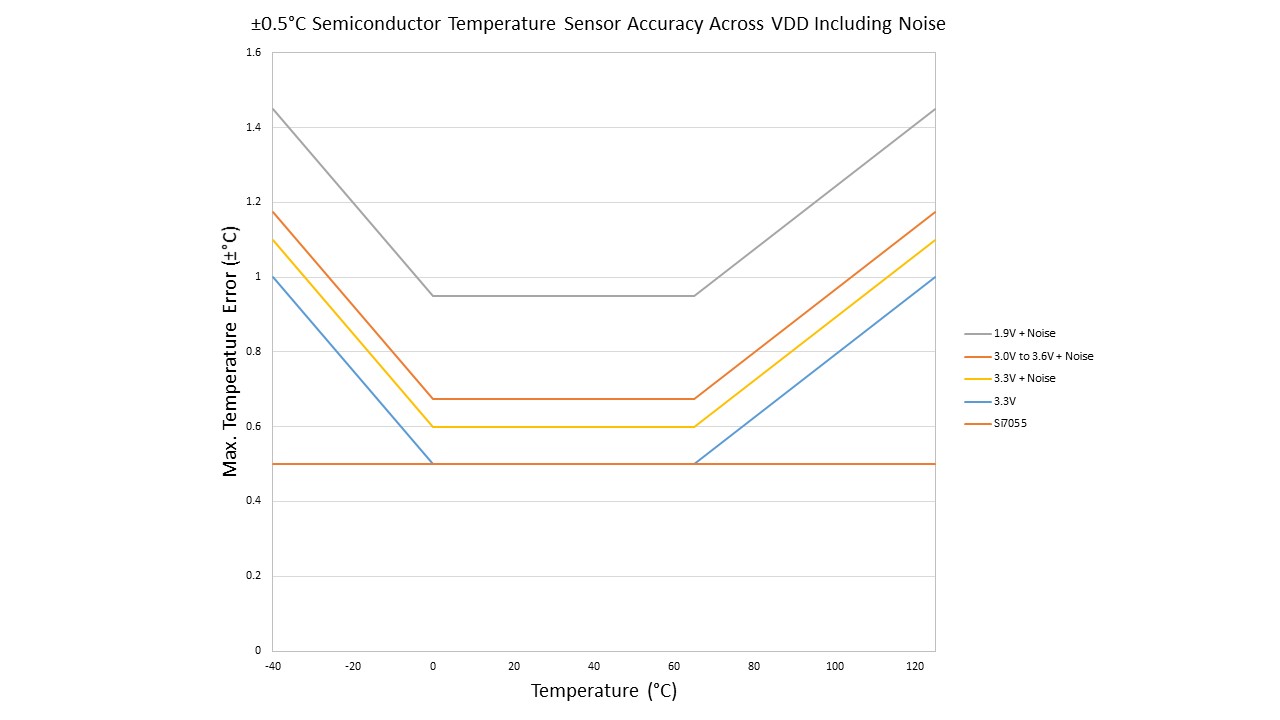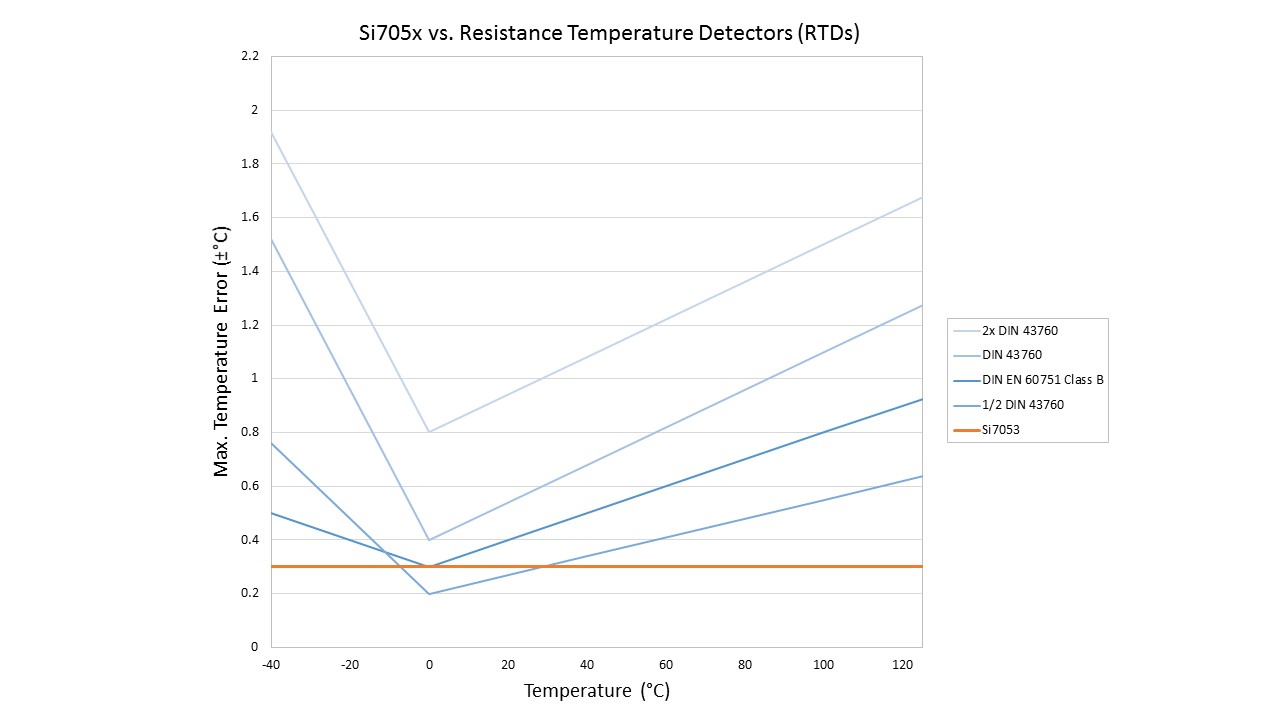Your comfort is our care-about
Accurate temperature measurement is important for many reasons, and can be achieved in various ways, including a new CMOS-based semiconductor sensor. By Bill Simcoe, Environmental Sensor Product Manager, Silicon Labs
Temperature is one of the most common environmental metrics measured in electronic systems, and numerous sensor types are available to meet the various application requirements of embedded system designers. However, designers must pay careful attention when selecting a temperature sensor to ensure that the overall sensor accuracy meets design specifications.
For basic temperature sensing where accuracy of ±2°C to ±3°C is adequate, thermistors tend to be a popular choice due to their low cost and minimal bill of materials (BOM). However for MCU-based applications, if an analog to digital converter (ADC) input is not available, then semiconductor sensors are the preferred option. For designs that require accuracy better than ±2°C, lower power consumption and/or high-resolution measurements, semiconductor sensors provide the best performance for the price as long as the sensing range is within –40 to +125°C. Resistance temperature detectors (RTDs) traditionally offer the highest accuracy (up to ±0.2°C), albeit at high cost and with additional external BOM cost necessary to maintain accurate analog to digital conversions.
New semiconductor temperature sensors such as the Si705x sensor family from Silicon Labs now offer accuracy levels comparable to RTDs but without the need to add external devices, which can increase system-level BOM cost.
Thermopiles offer the advantage of non-contact measurement and can therefore also measure a wide range of temperatures. Traditional thermopile designs use TO-5 metal can packaging, which either require external amplification or contain an embedded ASIC. This approach, coupled with the need for proper opto-mechanical design, necessitates higher cost and limits thermopiles to applications where the non-contact measurement provides significant advantages. Examples of applications appropriate for thermopiles include in-ear thermometers and industrial process controls operating at high temperatures.
 Figure 1: Example of typical and maximum temperature accuracy for semiconductor sensor.
Figure 1: Example of typical and maximum temperature accuracy for semiconductor sensor.
Influencing factors
Semiconductor temperature sensors commonly use a bandgap element that measures variations in the forward voltage of a diode to determine temperature. To achieve reasonable accuracy, these are calibrated at a single temperature point, typically 25°C. Therefore, highest accuracy is achieved at the calibration point, and accuracy then deteriorates for higher or lower temperatures. For higher accuracy across a wide temperature range, additional calibration points or advanced signal processing techniques can be employed.
Manufacturers of semiconductor temperature sensors will specify typical and maximum temperature accuracy within certain temperature ranges, as shown in Figure 1. While typical values can give some idea of the accuracy for a few devices under ideal conditions, developers should rely on the maximum values for a true indication of accuracy across multiple devices and under a variety of conditions.
Power supply voltage can also affect temperature accuracy in a semiconductor sensor. Sensor devices with a lower level of internal voltage regulation will exhibit greater reductions in accuracy when the power supply deviates from nominal voltages. Most manufacturers will include this in their datasheet specifications, with maximum values in the range of ±0.2°C/V to ±0.3°C/V.
In higher accuracy devices with <±0.5°C error, secondary effects will begin to emerge that can also play a role in overall accuracy. These effects are often specified separately from the overall accuracy specification in manufacturers’ datasheets and should therefore be considered. Some of these effects include repeatability/noise — the error introduced by the analog front end and ADC, and can range from ±0.1°C in lower performance products to ±0.01°C in higher performance products; and drift/stability — additional error can be introduced over time as the sensing device ages.

Figure 2: Si705x sensors provide excellent temperature sensing accuracy across their operating voltage and temperature ranges.
Design considerations for high accuracy
Proper placement of temperature sensors on a printed circuit board (PCB) is critical to maintaining accuracy. For measuring ambient air temperatures, sensors should be placed as far away from other heat sources as possible. These sources include MCUs, voltage regulators and other electronic components. If the sensor is placed on the same PCB as other heat-generating components, cutouts in the PCB can help provide thermal isolation. Adequate ventilation must also be provided to allow the sensor to contact the ambient air.
If the temperature of PCB components must be measured, temperature sensors should be placed as close as possible to the critical components. GND and VDD planes can be used to provide a thermal conduction path from the components to the sensors.
The response time of a temperature sensor is closely related to the thermal mass of the PCB and the enclosure in which it is mounted. For example, a temperature sensor attached to the center of a large PCB will show a very slow response to changes in air temperature. For the fastest response time, mount temperature sensors to smaller PCBs, or provide cutouts to insulate the sensors from the rest of the system’s thermal mass.
The Si705x digital temperature sensor is a good example of a CMOS-based semiconductor sensor. Si705x devices have been designed to maintain their sensing accuracy across the entire operating voltage and temperature ranges. With an operating voltage range of 1.9V to 3.6V, the Si705x devices can be directly connected to a battery in remote sensing applications. As shown in Figure 2, the Si705x devices provide noticeable improvements in accuracy at high and low temperatures, minimal loss of accuracy from noise and no sensitivity to power supply voltage.
To achieve high sensing accuracy, devices like the Si705x sensor also provide acceptable alternatives to resistance temperature detectors without the added cost and BOM complexity (Figure 3.)

Figure 3: Semiconductor sensors like the Si705x devices provide superior accuracy compared to RTD sensing alternatives.











